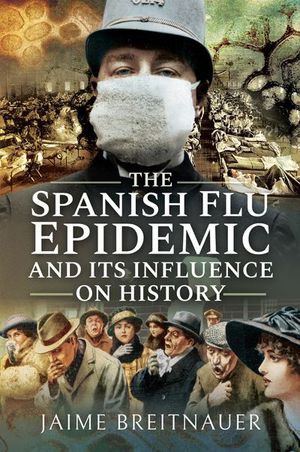The Spanish Flu Epidemic and Its Influence on History
Published by Pen & Sword Books
A look at the 1918 influenza pandemic from its outbreak to its effects on the global population and its legacy.
On the second Monday of March, 1918, the world changed forever. What seemed like a harmless cold morphed into a global pandemic that would wipe out as many as a hundred-million people—ten times as many as the Great War. German troops faltered, lending the allies the winning advantage, and India turned its sights to independence while South Africa turned to God. In Western Samoa, a quarter of the population died; in some parts of Alaska, whole villages were wiped out. Civil unrest sparked by influenza shaped nations and heralded a new era of public health where people were no longer blamed for contracting disease. Using real case histories, we take a journey through the world in 1918, and look at the impact of Spanish flu on populations from America to France and the Arctic, and at the scientific legacy this deadly virus has left behind.
“Breitnauer puts the whole thing into perspective with a fascinating account of the
origin and extent of the outbreak, at a time when people were returning from the conflict expecting a brave new world and instead confronting one of the deadliest epidemics ever to hit mankind.” —Books Monthly (UK)
On the second Monday of March, 1918, the world changed forever. What seemed like a harmless cold morphed into a global pandemic that would wipe out as many as a hundred-million people—ten times as many as the Great War. German troops faltered, lending the allies the winning advantage, and India turned its sights to independence while South Africa turned to God. In Western Samoa, a quarter of the population died; in some parts of Alaska, whole villages were wiped out. Civil unrest sparked by influenza shaped nations and heralded a new era of public health where people were no longer blamed for contracting disease. Using real case histories, we take a journey through the world in 1918, and look at the impact of Spanish flu on populations from America to France and the Arctic, and at the scientific legacy this deadly virus has left behind.
“Breitnauer puts the whole thing into perspective with a fascinating account of the
origin and extent of the outbreak, at a time when people were returning from the conflict expecting a brave new world and instead confronting one of the deadliest epidemics ever to hit mankind.” —Books Monthly (UK)
BUY NOW FROM
COMMUNITY REVIEWS

